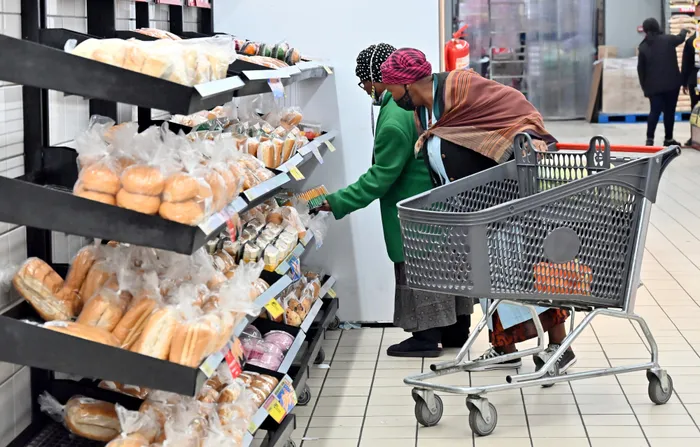Household food basket cost shows mixed trends in affordability for families in south africa

In a country grappling with affordability issues, the November 2025 Household Affordability Index underscores the challenges families face in putting food on the table amid rising costs. How does your household manage amidst these challenging economic conditions?
Image: Ayanda Ndamane/ Independent Newspapers.

In a country grappling with affordability issues, the November 2025 Household Affordability Index underscores the challenges families face in putting food on the table amid rising costs. How does your household manage amidst these challenging economic conditions?
Image: Ayanda Ndamane/ Independent Newspapers.

In a country grappling with affordability issues, the November 2025 Household Affordability Index underscores the challenges families face in putting food on the table amid rising costs. How does your household manage amidst these challenging economic conditions?
Image: Ayanda Ndamane/ Independent Newspapers.

In a country grappling with affordability issues, the November 2025 Household Affordability Index underscores the challenges families face in putting food on the table amid rising costs. How does your household manage amidst these challenging economic conditions?
Image: Ayanda Ndamane/ Independent Newspapers.
The November 2025 Household Affordability Index revealed a complex landscape for families across South Africa as they navigate food prices, with both increases and decreases reported for various basic foods over the past month.
The average cost of the Household Food Basket now stands at R5 413,53, reflecting a slight month-on-month decrease of R27,07 (-0,5%), but an annual increase of R52,49 (1,0%) compared to November 2024.
In total, 44 foods were tracked across several urban areas including Johannesburg, Durban, Cape Town, and smaller towns like Mountubatuba and Springbok.
While 17 foods saw price increases, a commendable 27 foods experienced price reductions, highlighting the diverse market dynamics at play.
Among the notable price hikes, certain staples saw alarming increases: salt rose by 5%, potatoes surged by 9%, and oranges took a steep leap of 22%.
Meanwhile, foods that increased by 2% or more included familiar groceries such as frozen chicken portions and tomatoes, adding to the financial burden on families trying to stretch their budgets.
Conversely, significant decreases in food prices offered some respite.
Sugar beans plummeted by 7%, onions by 8%, and carrots experienced a remarkable drop of 13%. Such reductions, while beneficial, seldom compensate for the rising costs of essential items.
Regionally, the food affordability landscape was uneven.
Johannesburg recorded a month-on-month decrease of R67,24 (-1,2%), while Springbok's food basket saw an upward shift of R123,82 (2,2%).
Such discrepancies underline the challenges many households face.
High inflation rates, 3.6% overall, with a food inflation rate of 3.9%, compounded these difficulties, particularly for lower-income families struggling to make ends meet.
The realities are stark, especially for those earning the National Minimum Wage of R28,79 per hour.
With a maximum wage of R4 606,40 per month for a general worker, families often find themselves financially stretched.
The average cost to feed a family of four is reported at R3 699,52, necessitating a precarious balance as families allocate funds for transport and electricity, which together consume 60.4% of their wages.
Significantly, the Child Support Grant of R560 remains 30% below the Food Poverty Line, leaving parents scrambling to provide adequate nutrition for their children.
As a result, families are often underspending by over 50% on food, making a nutritious diet seem like an unattainable luxury.
As November closes and the festive season approaches, the imperative for price stability and affordable nutrition is more critical than ever for South Africans striving to ensure their loved ones do not go hungry.
The impact of food pricing on family dynamics cannot be understated, assuring basic needs are met should be an ongoing priority for policymakers ahead of possible economic changes in the coming year.
BUSINESS REPORT